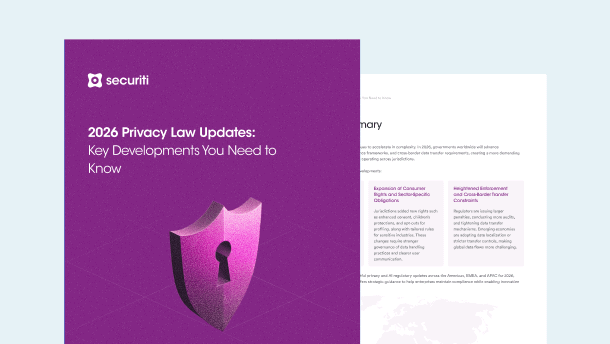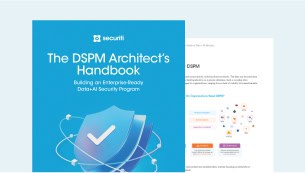AI and Generative AI (GenAI) are set to drive significant productivity and economic impact. IDC projects that they will contribute $19.9 trillion to the global economy through 2030 and drive 3.5 percent of global GDP in 2030. The key to harnessing this potential lies in a strategic shift from consumer-focused AI to building safe, enterprise-grade AI systems.
The biggest challenge in this shift is safely connecting to diverse data systems and extracting insights from unstructured data trapped in organizational silos. Integrating this data while maintaining strict controls and visibility throughout the AI pipeline has long been the main hurdle in deploying enterprise-grade, safe AI systems.
So, how can you overcome this challenge?
By mastering the following seven guiding principles, you can effectively utilize the power of enterprise AI safely and responsibly.
1. Harnessing Diverse Data
Enterprise AI systems require vast, diverse datasets, including proprietary information, to function effectively. To meet this requirement, you must provide both unstructured and structured data from a wide range of sources, integrating seamlessly across platforms, applications, private clouds, data lakes, and warehouses. The goal is to preserve essential metadata while ensuring the security of sensitive information throughout the process.
This principle establishes a strong foundation for your AI initiatives, fueling AI models with high-quality, protected data.
- Data Ingestion: Ingest unstructured and structured data from diverse sources.
- Data Selection: Define data scope at ingestion, excluding content for quality, legal and ethical compliance.
- Metadata Preservation: Maintain vital context to ensure data integrity.
Enterprise AI systems rely on large datasets that may contain sensitive or personal information, which could be misused, leaked, or accidentally supplied to AI models. According to the Economist-Databricks Impact Survey 2024, managing and controlling data for AI applications is one of CIOs' biggest challenges. To prevent this, sensitive data must be protected in real-time before it reaches the models, and systems must be continuously monitored for potential leaks.
This principle enables you to maintain the integrity of sensitive information while leveraging diverse and rich data sources to enhance AI capabilities.
- Data Classification: Discover and classify sensitive data at scale.
- Content Redaction: Automatically redact sensitive content on the fly before feeding into AI models.
- Data Leak Prevention: Inspect AI prompts, responses, and data retrieval for potential leaks.
3. Maintaining Data Access Controls
AI systems face the risk of losing established access entitlements as data is fed into them. To mitigate this, it's essential to maintain entitlement context throughout GenAI pipelines, ensuring LLMs only access user-authorized data when generating responses. Safeguard these entitlements by enforcing robust access control protocols and regularly updating them through audits.
This principle aligns enterprise AI systems with data governance frameworks, minimizing unauthorized access risks while maximizing AI's potential.
- Entitlement Preservation: Ensure AI models maintain existing entitlements across AI pipelines.
- Access Enforcement: Enforce entitlements within GenAI pipelines at the prompt level.
- Gap Analysis: Conduct regular audits to expose inadequacies in existing access controls.
4. Protecting Against AI-Specific Threats
Generative AI systems are susceptible to new attack vectors, potential data misuse, and the risk of non-compliant responses. To safeguard against these threats, implement LLM firewalls designed to prevent attacks like prompt injections. Additionally, continuously monitor LLM responses to ensure alignment with corporate policies on toxicity and permissible topics while also preventing sensitive data leaks.
By following this principle, you can mitigate OWASP top 10 LLM vulnerabilities and confidently deploy AI systems while minimizing security risks.
- Context-aware LLM Firewalls: Deploy LLM firewalls that understand natural language to prevent AI-targeted attacks.
- Data Leakage Monitoring: Continuously monitor AI responses to avoid sensitive information exposure.
- Policy Alignment: Ensure AI outputs adhere to corporate standards on toxicity and prohibited topics.
5. Ensuring Data Quality for AI Systems
Enterprise AI systems perform the best when you prioritize the quality of data fed to them. As these systems effectively utilize your unsecured data, focusing on its quality is essential to maximize the potential of AI systems. Start by meticulously curating and labeling your data, selecting relevant and current content while removing duplicates and redundancies. Maintaining full visibility, lineage, and governance throughout the entire AI life cycle is crucial to ensure only high-quality data reaches your AI models.
This principle enhances the effectiveness and reliability of AI-generated responses, ensuring that your AI-driven insights are accurate and trustworthy.
- Data Curation: Accurately curate and label unstructured data before feeding it to AI models.
- Data Selection: Select relevant, up-to-date content; remove duplicate and redundant information.
- Data Visibility: Ensure full visibility, lineage, and governance throughout the AI life cycle.
6. Navigating the Regulatory Landscape
Enterprise AI systems must comply with evolving regulations like the EU AI Act and NIST RMF. As AI advances and understanding deepens, laws will continue to adapt. According to a Deloitte survey, the top barrier to the successful development and deployment of Generative AI tools and applications is worries about regulatory compliance. Add to that the growing number of regulations. In the U.S. alone, AI regulations increased from a single regulation in 2016 to 25 regulations by 2023. Therefore, implementing strong governance with built-in regulatory mechanisms is necessary to build trust and mitigate legal, reputational, and financial risks.
This principle enables you to stay ahead of regulatory challenges, boost your reputation, and ensure that your AI systems foster ethical, efficient, and safe innovation.
- Global Compliance: Align AI systems with global regulatory frameworks like NIST AI RMF and the EU AI Act.
- Comprehensive Governance: Implement comprehensive governance systems with built-in regulatory knowledge.
- Regulatory Adaptability: Continuously monitor and adapt to evolving AI regulations.
7. Tracing Provenance in Complex AI Systems
To ensure transparency and build trust, it's essential to trace the full provenance of data throughout its lifecycle in an enterprise AI system. Achieve this by creating a unified view of your data and AI assets, enabling complete visibility into data lineage from source to AI-generated results.
This principle provides you with unmatched visibility and control over your entire Data+AI ecosystem, leading to better performance, optimized operations, and greater trust in AI-driven outcomes.
- Comprehensive Data Intelligence: Gain full visibility across all Data+AI assets and operations enterprise-wide.
- Data Provenance: Ensure traceability and quality from data source to AI-generated output.
- Scalable Governance: Manage multiple AI pipelines for compliance and performance optimization.
Building Safe Enterprise AI with Securiti’s Gencore AI
AI is a trending technology, with constant news highlighting its widespread adoption in enterprises. However, Gartner Research presents a surprising reality: at least 30% of generative AI projects will be abandoned after proof of concept by the end of 2025 due to poor data quality, inadequate risk controls, escalating costs, or unclear business value.
By following the seven guiding principles, you can ensure data security, regulatory compliance, responsible data management, and operational efficiency—essential elements for taking GenAI proof of concepts into production.
Gencore AI enables you to build safe, enterprise-grade AI systems, copilots, and agents within minutes by leveraging proprietary data across various systems and applications.
Visit gencore.ai or schedule a demo to see how Gencore AI can unlock your data's full potential and accelerate safe, responsible generative AI adoption.
Want to learn more about these seven safety pillars? Download our detailed infographic for a visual guide to building safe enterprise AI systems.













































